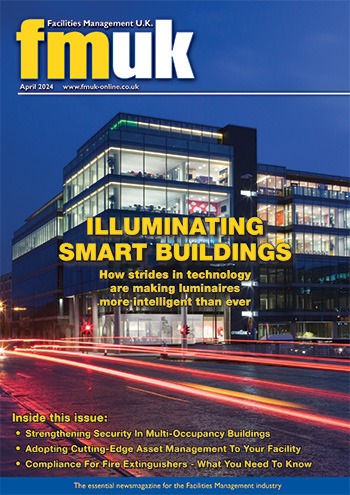BESA Welcomes Flexible Thinking In Net Zero ‘Playbook’
 The Building Engineering Services Association (BESA) has welcomed new guidance from the Cabinet Office aimed at decarbonising the UK’s largest property estate.
The Building Engineering Services Association (BESA) has welcomed new guidance from the Cabinet Office aimed at decarbonising the UK’s largest property estate.
In its ‘Net Zero Estate Playbook’, the government has set out advice for public sector organisations and procurers about how they can substantially lower their carbon footprint in line with its policy to deliver a 78% reduction in emissions from government buildings by 2035.
The public sector accounts for 9% of the country’s total building-related carbon emissions and, as the largest built environment client, steps taken by the government can also have a profound knock-on effect throughout the sector.
Its guidance for improving the performance of schools, hospitals, prisons, offices, and other public buildings, including listed and historic structures, provides advice on how to update energy and emissions audits, monitor in use performance and how to secure the necessary funding for building upgrades.
The Playbook takes a technology neutral approach because it notes that different buildings need different solutions. Therefore, it provides advice on a wide range of building engineering options including heat pumps, solar, low carbon heating, energy efficiency, LED lighting etc.
It also urges developers to carry out detailed assessments to ensure they use the right solution for the building in question, including whether they can be connected to heat networks and the potential for alternative energy sources like renewables, hydrogen, and biofuels.
Crucial
Chancellor of the Duchy of Lancaster Steve Barclay said decarbonising public buildings was “absolutely crucial if we’re going to meet our environmental targets”.
“Property professionals should use the Playbook to turn best practice into standard practice. It will put the public estate in a stronger position to deliver a 78% reduction in emissions by 2035, and be fully net zero by 2050,” added Barclay, who is the Cabinet Office Minister overseeing the net zero strategy.
The Playbook also outlines how project teams can meet the Future Buildings Standard for new developments, which will come into effect from 2025. The guidance will be updated at regular intervals as information and knowledge improves, the Minister added.
“The clarity of purpose set out in this new Playbook is extremely helpful,” said BESA’s head of technical Graeme Fox. “Setting down some of the technical detail needed to deliver the government’s net zero ambitions is the best way to focus effort in the right direction and drive practical action.”
At the recent BESA National Conference, architect and TV personality George Clarke called for a “global retrofit revolution” for buildings to help rapidly decarbonise the built environment and make it more resilient to the impact of climate change.
He urged the government abolish VAT on building restorations and renovations to speed up the decarbonisation of existing buildings – pointing out that 80% of the buildings we will be using in 2050 have already been built.
“Hopefully, the new Playbook with its detailed plan for upgrading and retrofitting the UK’s largest property estate will provide welcome impetus for a truly nationwide programme of building upgrades that put energy efficiency, low carbon heating and cooling, and improved building fabric at its heart,” said Fox.
He added that a “technology agnostic approach” was sensible to discourage people from ‘championing’ particular solutions when many, including most of the technologies the building engineering sector is already using, still have their place.
“The difficult bit is working out which solution is the right one for the task in hand so updating assessments and audits is the crucial first step. Flexibility is key and engineers need to be given the freedom to engineer,” said Fox.
“For example, there is more than one type of heat pump, which means it is a technology that can be widely applied, but equally it is not always the right choice. The contents of the Playbook suggest that the Cabinet Office, at least, is starting to understand some of the nuances of built environment engineering.”






















































